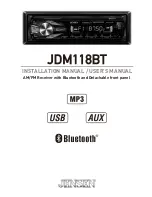
TX56/56A and TX57/57A Installation Manual
5 April 2022
01776-00-01
Issue AD
______________________
Trig Avionics
Page 31
antenna should be as far apart as practicable for maximum isolation.
We would recommend placing one antenna on top and one on the
bottom of the airframe. The Transmit Interlock function should also
be used in this case (section 5.6.4).
Where practical, plan the antenna location to keep the cable lengths as
short as possible and avoid sharp bends in the cable to minimise the
VSWR.
Electrical connection to the antenna should be protected to avoid loss of
efficiency as a result of the presence of liquids or moisture. All antenna feeders
shall be installed in such a way that a minimum of RF energy is radiated inside
the aircraft.
5.5.2
Com Antenna Ground Plane
When a conventional aircraft monopole antenna is used it relies on a ground
plane for correct behaviour. For ideal performance the ground plane should be
as large as practical; in any case at least 1 metre square. In a metal skinned
aircraft this is usually easy to accomplish, but is more difficult in a composite
or fabric skinned aircraft. In these cases a metallic ground plane should be
fabricated and fitted under the antenna.
The thickness of the material used to construct the ground plane is not critical,
providing it is sufficiently conductive. A variety of proprietary mesh and grid
solutions are available. Heavyweight cooking foil meets the technical
requirements, but obviously needs to be properly supported.
5.5.3
Nav Antenna
The Nav/Com is designed to use a single Nav antenna which it splits internally
to derive the VOR/LOC and Glideslope signals. Most VOR/LOC antennas
also act as glideslope antennas providing they do not have filters or diplexer
circuits in them.
The conventional Nav/Com antenna is a horizontal dipole and does not require
a ground plane. Try to keep the Com antenna and the Nav antenna as far apart
as practical.
Содержание TX56
Страница 2: ...This page intentionally left blank ...
















































